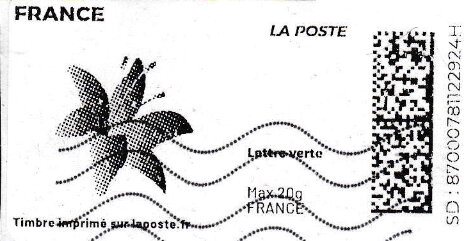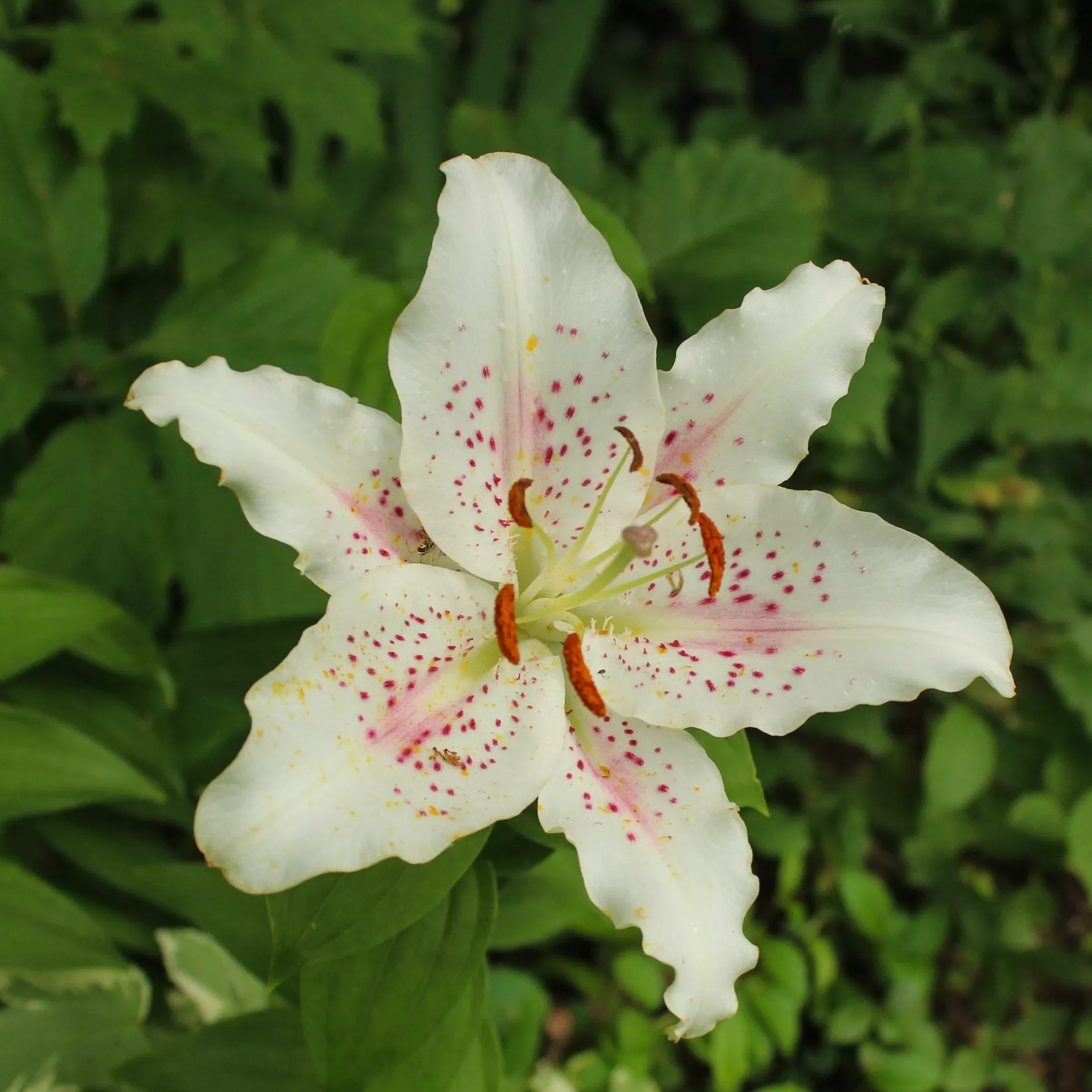Stamp: Flower Lily. Redesign without laposte logo (France 2023)
Flower Lily. Redesign without laposte logo (France 2023)
01 January (France ) within release MonTimbrEnLigne. Black and White goes into circulation Stamp Flower Lily. Redesign without laposte logo face value Lettre No Face Value
| Stamp Flower Lily. Redesign without laposte logo in catalogues | |
|---|---|
| Colnect codes: | Col: FR-TIM 2023-291 |
Stamp is square format.
Also in the issue MonTimbrEnLigne. Black and White:
- Stamp - Handshake 2. Redesign without Laposte logo face value Lettre;
- Stamp - Pharmacy Symbol. Redesign without Laposte logo face value Lettre;
- Stamp - Doodle. Green Dove. Redesign without LaposteLogo face value Lettre;
- Stamp - Earth 2 in black. without Laposte logo. Courrier Suivi face value Lettre;
- Stamp - Green Earth 2. in dark green Redesign without Laposte logo face value Lettre;
- Stamp - The Sales. Soldes. Redesign without laposte logo face value Lettre;
- Stamp - Airplane. Redesign without laposte logo face value Lettre;
- Stamp - Bicycle 1. Redesign without laposte logo face value Lettre;
- Stamp - Cat 1. Redesign without laposte logo face value Lettre;
- Stamp - Doodle. Croissant, cup and saucer, chocolate bun face value Lettre;
- Stamp - Doodle. Hat, Handbag, flip flop sandals. Redesign face value Lettre;
- Stamp - Doodle. Skyscraper Skyline, Aeroplane. Redesign Courrier ... face value Lettre;
- Stamp - Doodle. Skyscraper Skyline, Aeroplane. Redesign no logo face value Lettre;
- Stamp - Earth 2 in black. without Laposte logo. face value Lettre;
- Stamp - Flower Lily. Redesign without laposte logo face value Lettre;
- Stamp - Fountain Pen. Redesign without laposte logo face value Lettre;
- Stamp - Grey and Black Speech Balloons 'Echanger no logo' Redesign face value Lettre;
- Stamp - Hearts over Hand. Redesign without laposte logo face value Lettre;
- Stamp - Hippo. Redesign without laposte logo face value Lettre;
- Stamp - Monstera Leaf Woman's head big bow in her hair. Redesign face value Lettre;
- Stamp - Panda. Redesign without laposte logo face value Lettre;
- Stamp - Post box. Redesign without laposte logo face value Lettre;
- Stamp - Postman. Redesign without laposte logo face value Lettre;
- Stamp - Postvan 1. Redesign without laposte logo face value Lettre;
- Stamp - Postvan 2. Redesign without laposte logo face value Lettre;
- Stamp - Shamrock 1. redeign without laposte logo face value Lettre;
- Stamp - € House; Estate Agent Euro. redesign without laposte logo face value Lettre;
- Stamp - Doodle. Green Dove. Redesign no Laposte Logo face value Lettre;
- Stamp - Doodle. Dove. Redesign no Laposte Logo face value Lettre;
- Stamp - Light Bulb 3. Redesign no logo face value Lettre;
- Stamp - Doodle. Red Dove. Redesign no Laposte Logo face value Lettre;
- Stamp - Bicycle 1. Redesign without laposte logo face value Lettre;
- Stamp - Hearts over Hand. Redesign no logo. Courrier Suivi face value Lettre;
- Stamp - Doodle. Dove. 1 Redesign no Laposte Logo face value Lettre;
|
Data entry completed
46%
|
|
|---|---|
| Stamp Flower Lily. Redesign without laposte logo in digits | |
| Country: | France |
| Date: | 2023-01-01 |
| Emission: | Personalized - Official |
| Format: | Stamp |
| Face Value: | Lettre No Face Value |
Stamp Flower Lily. Redesign without laposte logo it reflects the thematic directions:
A flower, sometimes known as a bloom or blossom, is the reproductive structure found in plants that are floral (plants of the division Magnoliophyta, also called angiosperms). The biological function of a flower is to effect reproduction, usually by providing a mechanism for the union of sperm with eggs. Flowers may facilitate outcrossing (fusion of sperm and eggs from different individuals in a population) or allow selfing (fusion of sperm and egg from the same flower). Some flowers produce diaspores without fertilization (parthenocarpy). Flowers contain sporangia and are the site where gametophytes develop. Many flowers have evolved to be attractive to animals, so as to cause them to be vectors for the transfer of pollen. After fertilization, the ovary of the flower develops into fruit containing seeds. In addition to facilitating the reproduction of flowering plants, flowers have long been admired and used by humans to beautify their environment, and also as objects of romance, ritual, religion, medicine and as a source of food.
Lilium (/ˈlɪliəm/ LIL-ee-əm) is a genus of herbaceous flowering plants growing from bulbs, all with large and often prominent flowers. Lilies are a group of flowering plants which are important in culture and literature in much of the world. Most species are native to the Northern Hemisphere and their range is temperate climates and extends into the subtropics. Many other plants have "lily" in their common names, but do not belong to the same genus and are therefore not true lilies. True lilies are known to be highly toxic to cats


